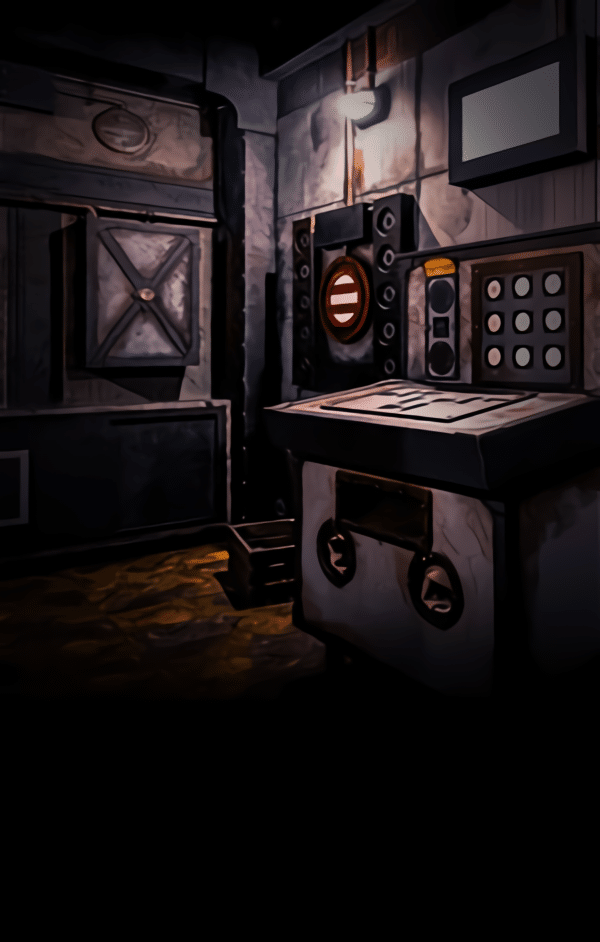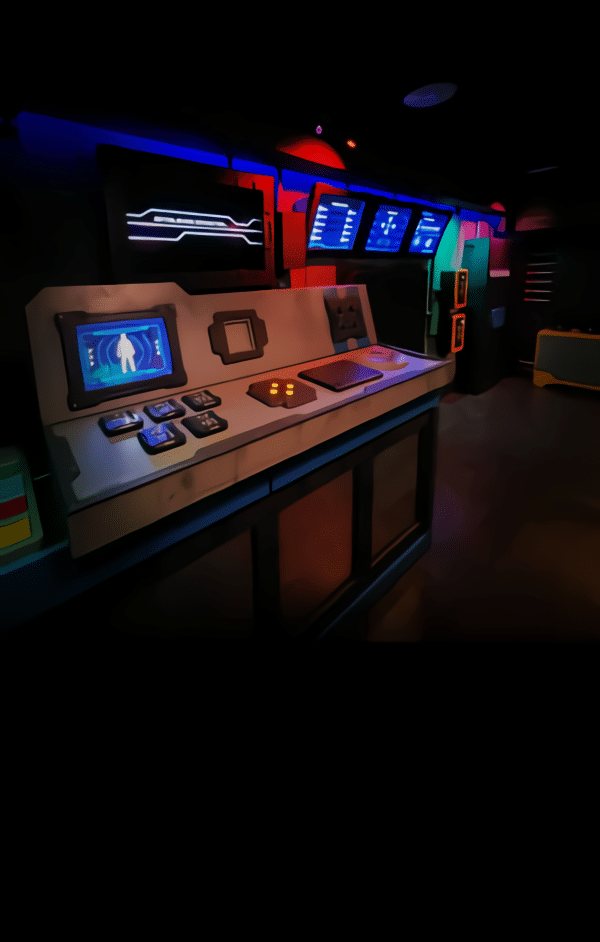Escape rooms have evolved far beyond locks and keys, especially at Mission Escape Games – NYC. The modern-day experience now often integrates high-end technology, sensors, and digital puzzles that immerse participants in a truly interactive environment. The escape room NYC mission escape game offers adventures that combine creativity with technology to make the gameplay more dynamic, engaging, and challenging.
Advanced Technology in Modern Escape Rooms
One of the most striking features of today’s escape rooms is the incorporation of advanced tech elements that transform static puzzles into immersive experiences. Instead of relying solely on mechanical locks, rooms now feature RFID sensors, motion detectors, and touch screens. These upgrades make the challenges more engaging and varied, appealing to players who appreciate problem-solving mixed with innovation.
Players might find themselves triggering a secret compartment through sound cues, solving digital codes projected onto walls, or manipulating virtual devices that interact with the physical environment. The integration of lighting effects, hidden speakers, and automatic door mechanisms amplifies the mystery, giving participants the feeling that they’re part of a high-stakes movie.
Examples of Electronic Puzzle Types
Technology allows for a diverse range of puzzle styles that go beyond physical manipulation. Common types include:
-
Sensor-based puzzles: Players must move objects to exact spots to activate hidden triggers.
-
Laser mazes: Participants navigate beams of light, testing agility and precision.
-
Augmented clues: Certain rooms use screens or projections that reveal hints only after specific actions.
-
Sound or motion puzzles: Microphones and sensors detect player actions, activating mechanisms or audio clues.
These puzzles add excitement and urgency, requiring both teamwork and quick thinking. Rather than focusing on brute force or guessing, they demand observation and logic—core principles of an exceptional escape room experience.
Immersion Through Lighting and Sound Effects
A hallmark of the escape room NYC mission escape game experience is its ability to create full immersion through audio-visual storytelling. Lighting effects can simulate power failures, flickering flashlights, or mysterious shadows. Similarly, sound cues—like alarms, whispers, or ticking clocks—build tension and guide players through each phase of the game.
Such sensory integration ensures that each challenge feels more cinematic and emotionally gripping. Even subtle details, like how a sound matches a successful clue, enhance satisfaction and reward quick wit.
How Technology Enhances Storytelling
Every escape room at Mission Escape Games – NYC revolves around narrative. Technology acts as a storytelling tool that strengthens immersion. Players might use communication devices to contact “characters,” interact with digital journals, or unlock plot developments through virtual consoles.
Electronic systems support branching narratives and real-time feedback, making each decision more meaningful. Technology effectively turns players from observers into participants who shape the outcome of the story.
Game Examples with Technological Elements
At Mission Escape Games – NYC, several rooms exemplify the fusion of creativity and technology:
-
End of Days A and B: These apocalyptic-themed rooms use interactive lighting and coded panels that respond to player progress, creating a sense of urgency and suspense.
-
Hydeout: Incorporates mysterious lab gadgets and audio-activated devices that enhance the detective storyline.
-
Carbon: 3708: A futuristic experience with digital sequences, holographic-style interfaces, and system overrides that feel straight out of science fiction.
Each game balances physical engagement and digital integration, allowing players to experience both tactile satisfaction and tech-driven wonder.
Benefits of Electronic Puzzles for Teamwork
Technology-based puzzles promote collaboration. Often, multiple players are required to synchronize actions—like activating switches simultaneously or decoding patterns displayed on screens. This encourages communication, coordination, and strategic planning.
By combining logical deduction with teamwork, Mission Escape Games – NYC ensures that every challenge appeals to different skill sets within the group, enhancing both the social and problem-solving aspects of the adventure.
The Role of Game Masters and Technology
While technology adds layers of complexity, game masters remain crucial. They monitor players’ progress through control systems connected to cameras and sensors within each room. This allows them to intervene subtly if teams struggle, ensuring the experience remains fluid and enjoyable.
Technology also helps game masters provide real-time hints or adjust the difficulty level mid-game, personalizing the experience for different groups.
Safety and Reliability in Tech-Enhanced Rooms
Safety is a top priority in all Mission Escape Games – NYC rooms. Each technological feature is tested rigorously to ensure smooth operation. Electronic doors have manual overrides, ensuring no participant is ever trapped. Backup systems are also in place to maintain gameplay continuity even in case of minor malfunctions.
This combination of safety protocols and advanced equipment provides peace of mind, allowing players to focus on solving puzzles and enjoying the adventure.
The Future of Tech in Escape Rooms
As escape rooms continue to evolve, the integration of more sophisticated technology—such as augmented reality (AR), artificial intelligence (AI), and virtual interfaces—is expected to redefine what it means to “escape.” Future games might include facial recognition for customized hints, interactive 3D mapping, or puzzles that adapt dynamically to player decisions.
Mission Escape Games – NYC remains at the forefront of these innovations, consistently pushing the boundaries of interactive entertainment.
Conclusion
Technology has revolutionized the escape room industry, turning every session into a cinematic and interactive experience. At Mission Escape Games – NYC, players encounter a blend of electronic puzzles, sensory effects, and storytelling elements that elevate traditional problem-solving to a new level. Whether navigating through futuristic systems or uncovering mysteries with motion-based clues, each challenge reflects the innovation behind the escape room NYC mission escape game design.
This seamless blend of creativity, teamwork, and technology guarantees a thrilling, memorable adventure for newcomers and seasoned players alike.
Frequently Asked Questions
1. Are there escape room NYC mission escape game experiences that include technology or electronic puzzles?
Yes, several rooms at Mission Escape Games – NYC feature technology-driven puzzles. These include sensor-based mechanisms, interactive lighting, and digital systems that respond to player actions, making the experience both challenging and immersive.
2. What kind of technology is used in these escape rooms?
Common technologies include RFID sensors, touch screens, motion detectors, sound-activated clues, and automated door systems. These innovations make each puzzle dynamic and responsive.
3. Do all rooms at Mission Escape Games – NYC include electronic puzzles?
Not all, but most modern rooms incorporate at least some form of technology to enhance gameplay. Some rooms emphasize physical puzzles, while others lean heavily on electronic interaction.
4. Are tech-based puzzles harder than traditional ones?
They can be more complex because they often require timing, coordination, and attention to sensory details. However, they’re designed for accessibility, so players of all experience levels can enjoy them.
5. Is it safe to play in rooms with electronic and automated elements?
Absolutely. Every electronic feature is tested for reliability, and safety overrides ensure no participant is ever in danger. Game masters monitor each session in real-time to maintain a secure environment.







